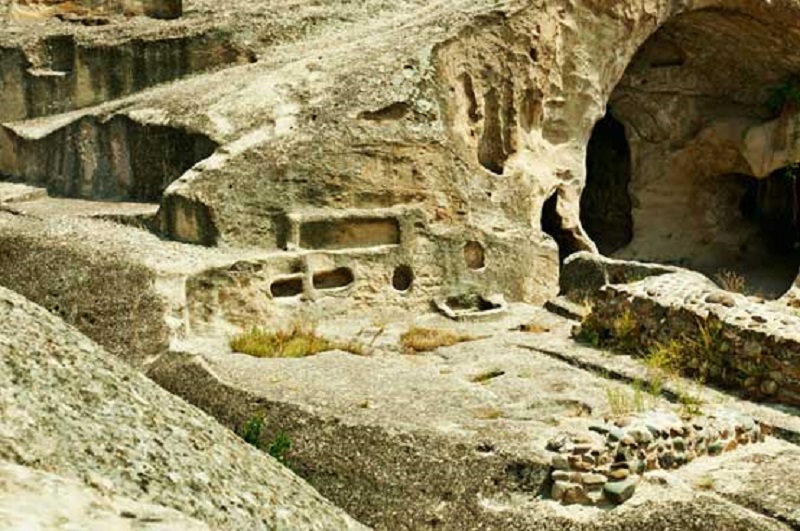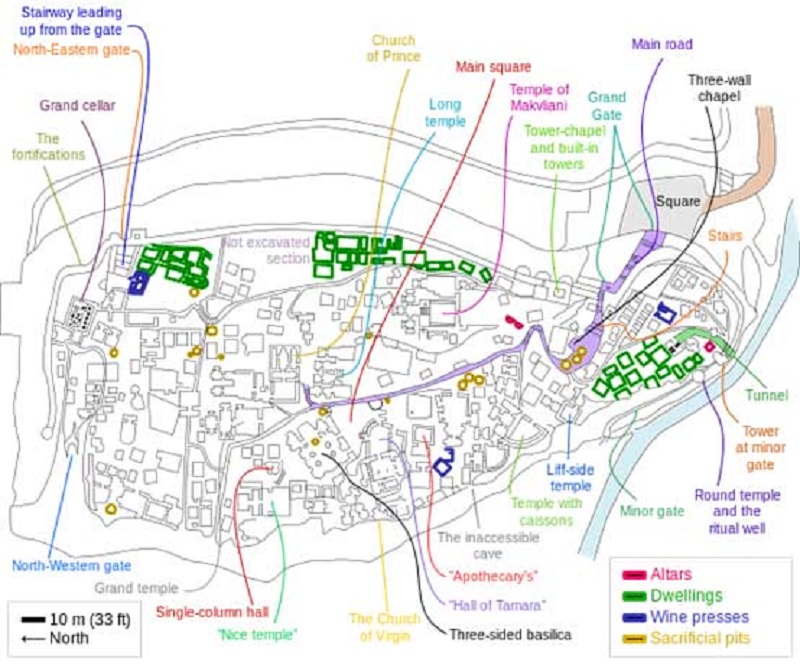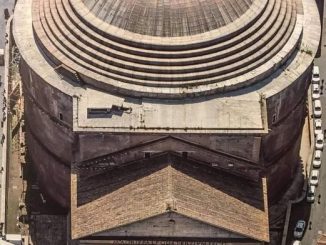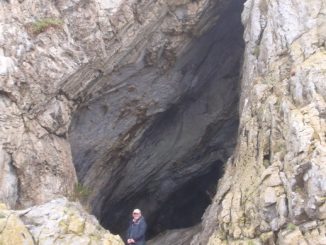Uplistsikhe, whose name translates as ‘God’s Fortress’, is an ancient rock-hewn town that played an important role in Georgian history over a period of about 3,000 years. Archaeological excavations have revealed extraordinary artifacts dating from the late Bronze Age to the late Middle Ages.
The ancient cave city was built on the rocky banks of the Mtkvari River, about 15 km east of the town of Gori. Between the 6th century BC and the 11th century AD, Uplistsikhe was one of the most important political, religious and cultural centers of pre-Christian Kartli, one of the forerunners of the state Georgia and flourished until it was destroyed by the Mongols in the 13th century.
Uplistsikhe ancient stone city. Source: BigStockPhoto
Beginning its history in the 2nd millennium BC, Uplistsike is identified as one of the oldest urban settlements in Georgia. At that time, this complex was a very important cultural center for pagan worship in the Kartli region (Iberia). Archaeologists have unearthed many temples and discoveries related to the sun goddess, worshiped before the arrival of Christianity.
When Christianity came to Georgia in the 4th century AD, the city lost its importance to the new Christian cultural centers, most prominently Mtskheta and Tbilisi. However, life in Uplistsikhe continues. Christian structures were built, and for a short time, Christianity and the old faith coexisted in the city. After the Muslim conquest of Tbilisi in the 8th and 9th centuries AD, Uplistsikhe re-emerged as a major Georgian stronghold and became the seat of the Kartli kings, during which time the town developed with a scale of about 20,000 residents.

Uplistsikhe cave city. Source: BigStockPhoto
Uplistsikhe is notable for its unique combination of styles from regional stone carving cultures, most notably from Cappadocia (in modern Turkey) and Northern Iran. The ancient complex can be divided into three parts: a lower part, a middle part and an upper part covering an area of about 40,000 square meters. The middle section is the largest and contains the majority of the rock-hewn structures. It is connected to the lower part through a narrow rock-cut path and a tunnel. Narrow alleys and sometimes staircases radiate from the central “street” to various structures. The upper floor is a Christian stone basilica, dating from the 9th – 10th centuries.
Stone structures include houses, large halls, known as Tamaris Darbazi, places of pagan sacrifice, and functional buildings such as bakeries, prisons, wine cellars, and even amphitheater, all connected by walkways and tunnels.

Uplistsikhe stone city map. Source: Wikipedia
Most stone structures do not have any decorative elements, except for some larger structures that have some stone carvings and have some The bamboo has intricately carved ceilings. Some larger structures also have niches in the back or sides, believed to be used for ceremonial purposes.

Cave with surviving walls at Uplistsikhe. Source: BigStockPhoto
Some of the fronts of the cave are carved into the shape of a house with a triangular roof top. In some areas, you can see there were columns standing from floor to ceiling, but they are no longer visible.
The house has a triangular roof top. Photo source: Russian Tourism
Archaeological excavations have uncovered many artifacts from different time periods, including gold, silver, and bronze jewelry, as well as ceramic samples and sculptures. Many of these artifacts are safely preserved at the National Museum in Tbilisi.
The Uplistsikhe cave complex existed for about 3,000 years but was finally destroyed at the hands of the Mongols in the 13th century. Since then, this site has been largely abandoned, only occasionally used as a temporary shelter when invaded by foreign invaders. It is currently on the tentative list for inclusion in the UNESCO World Heritage program and is a popular destination for tourists visiting Georgia.




